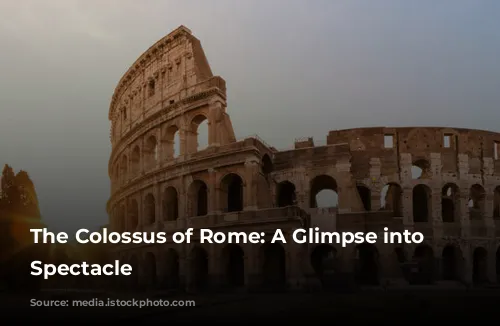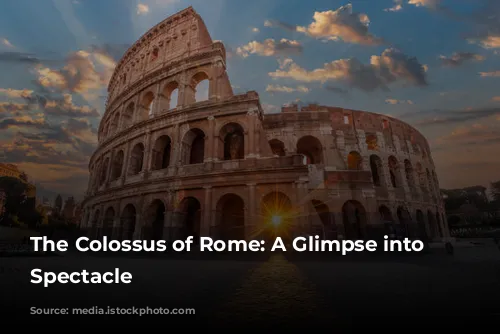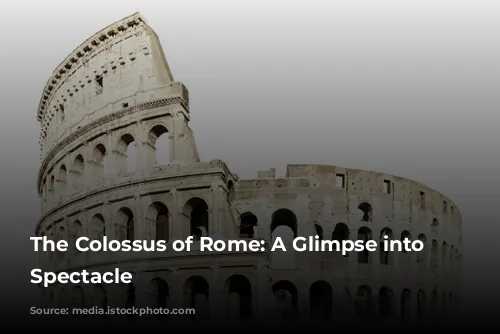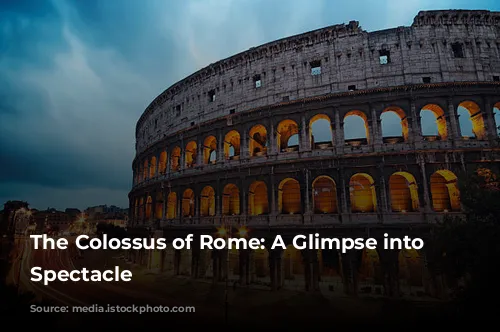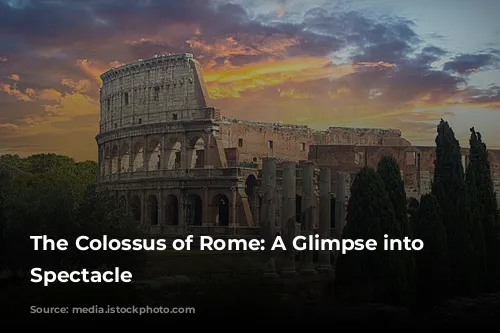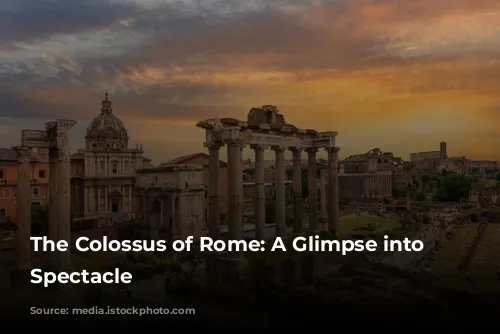The Colosseum, towering over the city of Rome, isn’t just a monument – it’s a living testament to the grandeur and brutality of the Roman Empire. This imposing amphitheater, officially known as the Flavian Amphitheatre, was conceived by Emperor Vespasian and completed by his son, Titus, in 80 AD.
A Grand Opening and a Monumental Prophecy
The Colosseum’s inauguration was an extravaganza, a 100-day spectacle that captivated the Roman populace. Bloodsport was the order of the day, with gladiatorial combats and hunts involving thousands of animals. The most spectacular event was the naumachia, a water battle staged in the arena, bringing to life the epic naval clashes of the past.
The name “Colosseum” itself is shrouded in mystery. A prophecy by the Venerable Bede, a medieval monk, linked the Colosseum’s fate to that of Rome: “Rome will exist as long as the Colosseum does; when the Colosseum falls so will Rome; when Rome falls so will the world”. This prophecy suggests the name might have derived from the Colossus of Nero, a massive statue of the emperor that stood near the amphitheater.
Architectural Prowess: Building a Giant
The Colosseum, a marvel of engineering, is an elliptical structure, designed to accommodate a vast audience. It boasts four levels, each adorned with arches and statues. The Romans’ mastery of the arch enabled them to distribute the weight of this monumental structure efficiently, just as they did with their iconic aqueducts.
The Colosseum’s construction is a testament to Roman ingenuity. Imagine, this colossal edifice took less than a decade to build! This feat was made possible by their expertise in architecture, construction techniques, and labor management.
A Skeleton of Glory: The Colosseum’s Legacy
Today, we see only the skeleton of the Colosseum, a reminder of its former glory. Time and human intervention have taken their toll. During the Middle Ages, the Colosseum was plundered for its building materials, its marble, lead, and iron used for projects like Barberini Palace and St. Peter’s Basilica.
Despite this ravaging, the Colosseum’s grandeur remains undeniable. Seventy thousand spectators could be accommodated within its vast tiers, each one designed for optimal viewing of the arena below. Social status dictated seating arrangements, with the commoners occupying the upper tiers and the elite seated close to the action.
The Spectacle Within: From Gladiators to Wild Animals
The arena itself is a theater of blood and spectacle. It once housed a complex network of lifts and traps, used to introduce gladiators, animals, and even elaborate sets into the arena, creating a dramatic and surprising spectacle for the crowd.
The Colosseum’s shows were not only entertainment; they were a form of social control, propaganda, and public spectacle, linking the citizenry to their emperor through shared experiences.
The Gladiators: Warriors and Entertainers
The gladiators, the stars of the Colosseum, were a diverse group. Some were prisoners of war, others were destitute individuals seeking a path to fame and fortune. Each gladiator had a unique style, a special weapon that made him a formidable opponent.
The battles were thrilling and violent, and the outcome often rested in the hands of the audience. With a thumbs up, the emperor granted mercy to the defeated gladiator; a thumbs down sealed his fate.
The Colosseum’s Enduring Legacy: From Ruins to Symbol
The Colosseum’s glory waned with the decline of the Roman Empire. It was used as a quarry, a fortress, and even a cemetery. But in the Middle Ages, it was declared a sacred monument, a symbol of Christian martyrdom. Today, the Colosseum stands as a UNESCO World Heritage Site, drawing millions of visitors each year.
The Colosseum is a powerful reminder of the complexities and contradictions of the Roman Empire. It is a monument to human ingenuity, brutality, and endurance. To stand within its ancient walls is to experience a connection to the past and to glimpse the spectacle that once unfolded within its arena.
